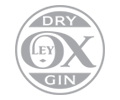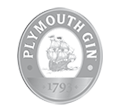Patience Gould reports on the first of Gintime’s Ultimate Gin and Tonic Tasting with a special look at the tonic waters.
In tandem with gin’s renaissance there is, quite rightly, a renewed focus on tonic water. There are some magnificent gins around these days with prices to match and there’s no point lashing out money on your favourite gin – if you are then going to slosh any old tonic into it. And there are some pretty ropy tonics around, which at worst, are carbonated water with a smattering of saccharine mixed up with artificially produced quinine. But the fact remains that however good your chosen gin if the tonic is below par the resulting G&T will be definitely sub-standard.
At Gintime we’ve set about sorting out the conundrum: which gin and which tonic makes the best combination. When we first contemplated the idea we discovered that to do all gins and all tonics justice it would mean tasting at least 150 G&Ts – and while that’s a delicious thought, it clearly wouldn’t work in practice.
So for the sake of sanity and overall life expectancy we decided to scale down the tasting to 12 gins and 3 tonic waters and do it in sessions of three at a time culminating in a grand finale where we pick the ultimate winner. As a result this year in the first round of the Ultimate Gin & Tonic Tasting our three tonics under the spotlight are Fever Tree, Waitrose Own Label and Schwheppes. The selected gins in the first line-up were Plymouth, No.3 and Tanqueray – all big tasting gins weighing in with abvs of 41.2%, 46% and 43.1% respectively.
The blind tasting was organised at the Ginstitute in London’s Portobello Road, and its founder and gin enthusiast Jake Burger chaired the tasting. After much discussion and cogitation we decided on a 50/50 split between gin and tonic to give both ‘liquids’ a fair showing – no fruit – and the G&Ts were served on the rocks. We had no idea what we were tasting either tonic or gin wise – we simply had to find the best combination.
As it turned out it was in fact Plymouth Gin & Fever Tree Tonic that was the top combination, followed by Plymouth & Waitrose, then Tanqueray & Waitrose. The best tonic with No. 3 turned out to be Fever-Tree, which is interesting because it’s the tonic that producer BB&R Spirits recommends – and quite right too!
This is going to be a fascinating exercise – and anyone who doubts the difference a tonic can make to a gin would have had the wool well and truly pulled from their eyes. Even when the same spirit was used we ended up with three completely different flavour combos. So the first round is over and come July the second round will take place using the same tonics, but different gins.
About the Tonics
The three tonics selected for the Ultimate Gin & Tonic Tasting, are all top drawer. Of the three Schweppes is the most internationally available and has long been the standard choice for a G&T. But in tandem with gin’s renaissance, the launch of Fever-Tree (and other boutique brands like Fentimans) has heightened the focus on tonic quality, and at the same time given the consumer more choices and the opportunity to shop around for the best.
As the Fever-Tree website puts it: “If ¾ of a Gin & Tonic is tonic, make sure you use the best” – and this is what the company has set about producing. Fever-Tree is in fact the colloquial name for the cinchona tree which is grown in plantations down in the Congo, and it is the bark from this tree, which produces quinine. As far as we know Fever-Tree is the only tonic producer to source its quinine from these plantations.
It’s the quinine that gives tonic its bitter characteristic and which blends so well with the green notes associated with juniper making the G&T the perfect combination. The other essential ingredient in tonic is sugar – and very often tonics contain the dreaded word “saccharine” – particularly the slim-line variants – and while you expect low calorie foodstuffs to taste pretty awful – it is a sad fact that a lot of mainline tonics now include saccharine, no doubt for reasons of economy – but the saccharine taste does show up – and it is unpleasant.
We did want to find out more about Waitrose’s redoubtable tonic offering – but to no avail. We asked three questions: Who is the producer? Does Waitrose own the producer? And how long has the tonic been around? And the reply was: “These details are commercially sensitive so we will not be able to help on this occasion”. Ho-hum!
Listed ingredients in the tonic trio:
Schweppes
The ingredients of the tonic water are carbonated water, sugar, citric acid flavourings (including quinine) sweetener sodium saccharine.
Fever Tree
The listed ingredients make for joyous reading: spring water, cane sugar, natural flavours and natural quinine.
Waitrose
This proudly boasts “no artificial flavourings” and the list of ingredients goes on to state: carbonated water, sugar, citric acid, acidity regulator sodium citrates, flavourings (including quinine hydrochloride, preservative potassium sorbate.




